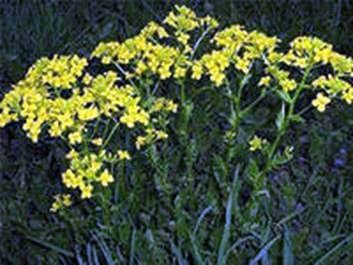
Mustard white – one-year plant with a family of cruciferous. Its flowering begins 30-35 days after sowing and lasts 38-42 days, one flower 3-4. Depending on the soil and climatic conditions, the amount of sugar in the nectar of one flower varies from 0.29 to 0.44 mg.
1 hectare of crops on average gives 80-100 kg of honey.
Bees intensively visit mustard flowers during the day, collecting nectar and pollen, but most actively in the morning hours. It is recommended to sow mustard at different times to extend the duration of the honey harvest.
Honey from mustard is white amber, has a faint smell of flowers, low taste qualities, quickly crystallizes (coarse-grained crystallization). It is not recommended to leave bees for wintering.
One flower gives an average of 0.0734 mg of pollen, 1 ha – 68-112 kg.
Мед кленовый. Можно мед когда желчного пузыря.
Медоносы